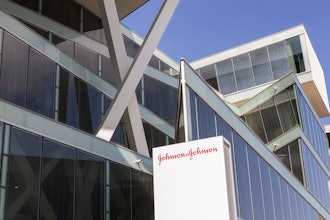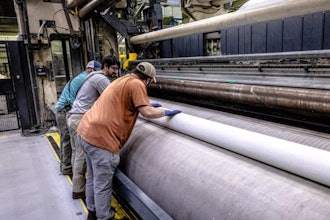PORT WENTWORTH, Georgia (AP) — A helicopter dumped thousands of gallons (liters) of river water onto a gutted sugar refinery where six workers died and two remained missing after an explosion that burned more deeply than officials first suspected.
White smoke wafted Monday from the ravaged plant area after each drop. Then the yellow helicopter headed back to the Savannah River, returning every two minutes or so with more water to dump on sugar smoldering in silos at temperatures as high as 4,000 degrees Fahrenheit (2,204 Celsius).
One of the Imperial Sugar refinery's three 100-foot (30-meter) storage silos blew up late Thursday, with sugar dust the likely culprit. Dozens of workers were injured. Fire crews could not search for the missing two because hot spots rendered areas of the plant unstable.
By late in the day, the crews were able to reduce the temperature of the molten sugar to about 2,800 degrees Fahrenheit (1,538 Celsius), but that was not enough, said Port Wentworth Fire Chief Greg Long.
A private fire suppression team from North Carolina was to arrive early Tuesday, Long said. The company specializes in putting out oil and silo fires and can use large amounts of water and foam, if needed, to extinguish the blaze.
Mounds of sugary sludge that poured out of two silos had solidified in places, making a sticky, concrete-like mixture that had to be cut with power tools. Search crews found the body of one of three missing workers Sunday before the search was called off at sunset for the other two.
The fire spread deeper into the sugar silos than first imagined, complicating efforts to put it out, Port Wentworth Fire Chief Greg Long said.
''We initially thought only the top 3 or 4 feet of the product was on fire,'' he said.
Thermal imaging cameras were used to determine that the fire reaches down as deep as 10 or 12 feet (3 or 2.6 meters). Firefighters hope to cool and solidify the top layer, forming an oxygen barrier to smother the fire below, Long said.
Because the fire is so hot, officials are concerned the silos may collapse. Sugar was piled about 55 feet high inside one silo. It was almost 80 feet down in the other, Long said. By early afternoon, more than 22,000 gallons (83,277 liters) of water had been dumped on the silos.
''If they were to fail and collapse, it would render the rest of the plant unsearchable,'' Long said.
Once the fire is out, railroad cars near the plant will be moved and debris taken away, allowing searchers to go through the last 5 percent of the plant that had not been searched, he said.
Dump trucks filled with sand, cranes and other ground emergency vehicles were parked in neat rows about 300 yards (274 meters) from the refinery Monday so the smoldering fire could be fought from the air. A heap of twisted, burned girders, metal and other debris was piled nearby.
''There have been no reports of any other unaccounted for employee or contract employee for Imperial Sugar,'' said Capt. Matt Stanley from the fire department in nearby Savannah.
''So we have no reason to believe there would be any more than the original eight that were unaccounted for.''
As the white smoke rose from the damaged plant beyond a line of oaks, two cadaver dogs waited to begin their grim work.
''We're conducting helicopter operations to make sure the fire is completely out,'' said Tracy Sergeant, who heads the Georgia Body Recovery Team. ''Once the area is rendered safe, we will go in and start searching with the dogs.''
Seventeen workers remained hospitalized Monday — 16 in critical condition with severe burns — said Beth Frits of the Joseph M. Still Burn Center in Augusta.
Jamie Downs, medical examiner for the Georgia Bureau of Investigation, said it could be several days until all remains are positively identified. Dental records will have to be used, he said.
The plant is on 160 acres (65 hectares) on the river upstream from Savannah. About 12 percent of the plant was destroyed, said company spokesman Steve Behm.
Imperial chief executive officer John Sheptor said that the company plans to repair the plant and that workers will be paid while it is rebuilt. An engineering team will be on site Tuesday to determine what needs to be done, he said.


















